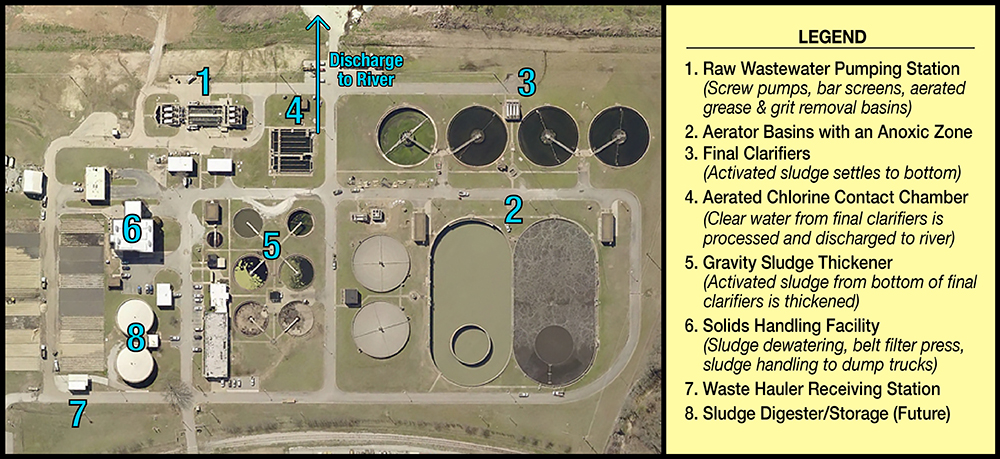Wastewater Treatment
The process of treating wastewater is a biological process that occurs naturally in nature over a period of time. To accommodate the millions of gallons of wastewater received at the treatment facilities, there is specialized equipment in place to help speed the process. Jackson Energy Authority owns and operates two wastewater treatment facilities in Jackson and a small treatment lagoon facility in the town of Pinson. The main plant, located in Midtown, operates at 50% capacity with a max capacity of 17.4 million gallons per day. The secondary plant, located North of the city, operates at 50% capacity with a max capacity of 6 million gallons per day. The Pinson lagoon capacity is 40,000 gallons per day.
The components that make up the wastewater treatment process include: influent, physical treatment, biological treatment, sludge treatment and effluent.

Influent
Wastewater enters the raw wastewater pumping station from the wastewater collection system as well as from contracted vendors.
Physical Treatment
At the wastewater pumping station, the raw wastewater is pumped by a set of first stage screw pumps to mechanical bar screens, The screens remove the oversized solids from the water, which are then sent to the landfill.
Once it passes through the screens it enters aerated grease and grit removal basins where grit is allowed to settle and grease is skimmed for disposal.
Biological Treatment
From the grease and grit removal basins, the wastewater is pumped again by a set of second stage screw pumps to the aeration basin where it is mixed with microorganisms. The organics in the wastewater provide a food source for the microorganisms. As the microorganisms grow and are mixed by the agitation of air, the individual organisms clump together (flocculate) to form an active mass of microbes called “activated sludge.”
The wastewater continuously flows into the aeration tank as air is injected to mix the activated sludge (also known as mixed liquor) with the wastewater and the oxygen needed for the microbes to break down the organic matter.
Sludge Treatment
The mixed liquor flows from the aeration tank to a clarifier where the activated sludge is settled. Some of the settled sludge is returned to the aeration tank to maintain a high population of microbes to permit rapid breakdown of the organics.
Because more activated sludge is produced than can be used in the process, some of the return sludge is diverted or “wasted” to the Solids Handling Facility. The solids are consumed, pressed and dried to reduce cubic volume for disposal. It is then disposed of following EPA guidelines.
Effluent
Once the activated sludge settles in the clarifier, clear water flows to the chlorine contact chamber for re-aeration and disinfection. This ensures the clear water has the proper amount of oxygen and the water is safe for discharge. The clean, treated water is then discharged into the South Fork of the Forked Deer River.
